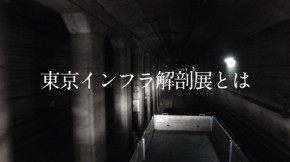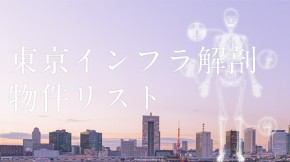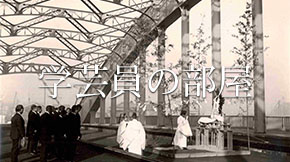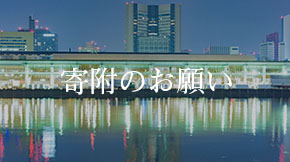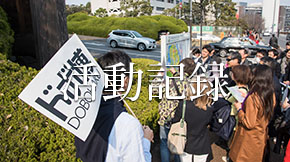Skeletal system
"Skeletal-system": the framework of the city or territory whose function is for structural support and protect of a group of "organs", such as river, moat, cliff, etc.

- TOKYO INFRASTRUCTURE 088 The Inner Moat
- TOKYO INFRASTRUCTURE 014 Onagi-gawa Lock/Komatsu-gawa Lock/Funabori Lock
- TOKYO INFRASTRUCTURE 048 Iwabuchi Sluice Gate
- TOKYO INFRASTRUCTURE 013 Arakawa Floodway
- TOKYO INFRASTRUCTURE 084 Outer Moat
Nervous system
"Nervous system": System responsible for information processing and transmission of cities such as communication tower, government office etc.
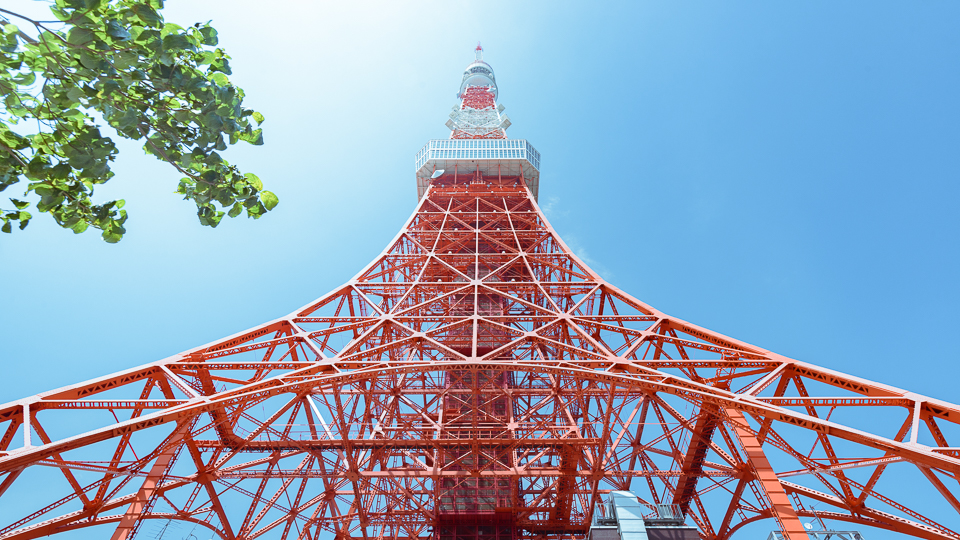
- TOKYO INFRASTRUCTURE 086 Otemachi, Marunouchi and Kasumigaseki
- Tokyo Infrastructure 003 Marunouchi Nakadori
- TOKYO INFRASTRUCTURE 078 Shinagawa
- TOKYO INFRASTRUCTURE 082 Tokyo Tower
- TOKYO INFRASTRUCTURE 034 Tokyo SKYTREE
Digestive system
"Digestive system": Organ that links "digestion" and "absorption" of "food" and connects from the "mouth" to the "anus" such as ports, airports to which materials are delivered, markets that are distribution bases, etc.

- TOKYO INFRASTRUCTURE 063 Keihin & Keiyo Industrial Area
- Tokyo infrastructure 065 Haneda Airport
- TOKYO INFRASTRUCTURE 006 Tsukiji
- TOKYO INFRASTRUCTURE 010 Tsukishima/Harumi/Toyosu
- TOKYO INFRASTRUCTURE 079 Port of Tokyo
Circulatory system
"Circulatory system": Organs that carry "nutrients", "oxygen", etc. to various parts of the "body", such as railroads, roads, bridges, tunnels, etc.

- Tokyo infrastructure 058 Bridges of Tama New Town
- Tokyo Infrastructure 011 Tokyo Gate Bridge
- Tokyo infrastructure 044 Katsushika harp bridge
- Tokyo Infrastructure 081 Rainbow Bridge
- Tokyo Infrastructure 056 Tama Ohashi Bridge
Respiratory system
"Respiratory system": Organs that operate external breathing such as parks, greenery, etc.

- TOKYO INFRASTRUCTURE 001 Imperial Palace
- TOKYO INFRASTRUCTURE 041 Ueno Park
- TOKYO INFRASTRUCTURE 072 The Innner and Outer Garden of Meiji-jingu Shrine, Yoyogi Park and Shinjuku Imperial Garden
- TOKYO INFRASTRUCTURE 068 Komazawa Olympic Park
- TOKYO INFRASTRUCTURE 087 Hibiya Park
Urinary system
"Urinary system": Organs that discharge wastes from the city or territory and keep the composition of the "body fluid" constant, such as sewage facility.

- TOKYO INFRASTRUCTURE 043 Mikawa-jima Sewage Disposal Plant
- TOKYO INFRASTRUCTURE 070 Wada-Yayoi Trunk Sewer
- TOKYO INFRASTRUCTURE 024 Kanda sewage
Immune system
"Immune system": Organs to protect the city or territory from foreign substances such as defense facility, police network, etc.

Metabolic function of cells
"Metabolic function of cells": a mechanism to promote "cellular metabolism", such as schools, residential areas, sports facilities, etc. that support the growth of people who can be regarded as urban "cells"

- TOKYO INFRASTRUCTURE 068 Komazawa Olympic Park
- TOKYO INFRASTRUCTURE 025 Motomachi Park & Former Motomachi Elementary School
- TOKYO INFRASTRUCTURE 057 Tama New Town
- TOKYO INFRASTRUCTURE 010 Tsukishima/Harumi/Toyosu
- TOKYO INFRASTRUCTURE 080 Odaiba (Batteries of Shinagawa)
Subcutaneous tissue
"Subcutaneous tissue": a part composed of "subcutaneous adipose tissue", "blood vessel" etc. such as landfill spreading inside the shoreline that forms "hide" of port town.

- TOKYO INFRASTRUCTURE 063 Keihin & Keiyo Industrial Area
- TOKYO INFRASTRUCTURE 012 Kasai Seaside Beach Park
- TOKYO INFRASTRUCTURE 010 Tsukishima/Harumi/Toyosu
- TOKYO INFRASTRUCTURE 080 Odaiba (Batteries of Shinagawa)
- TOKYO INFRASTRUCTURE 016 Kiba Park
Extra edition
"Extra edition": Special contents in addition to 88 infrastructures explained in relation to the human body organization

